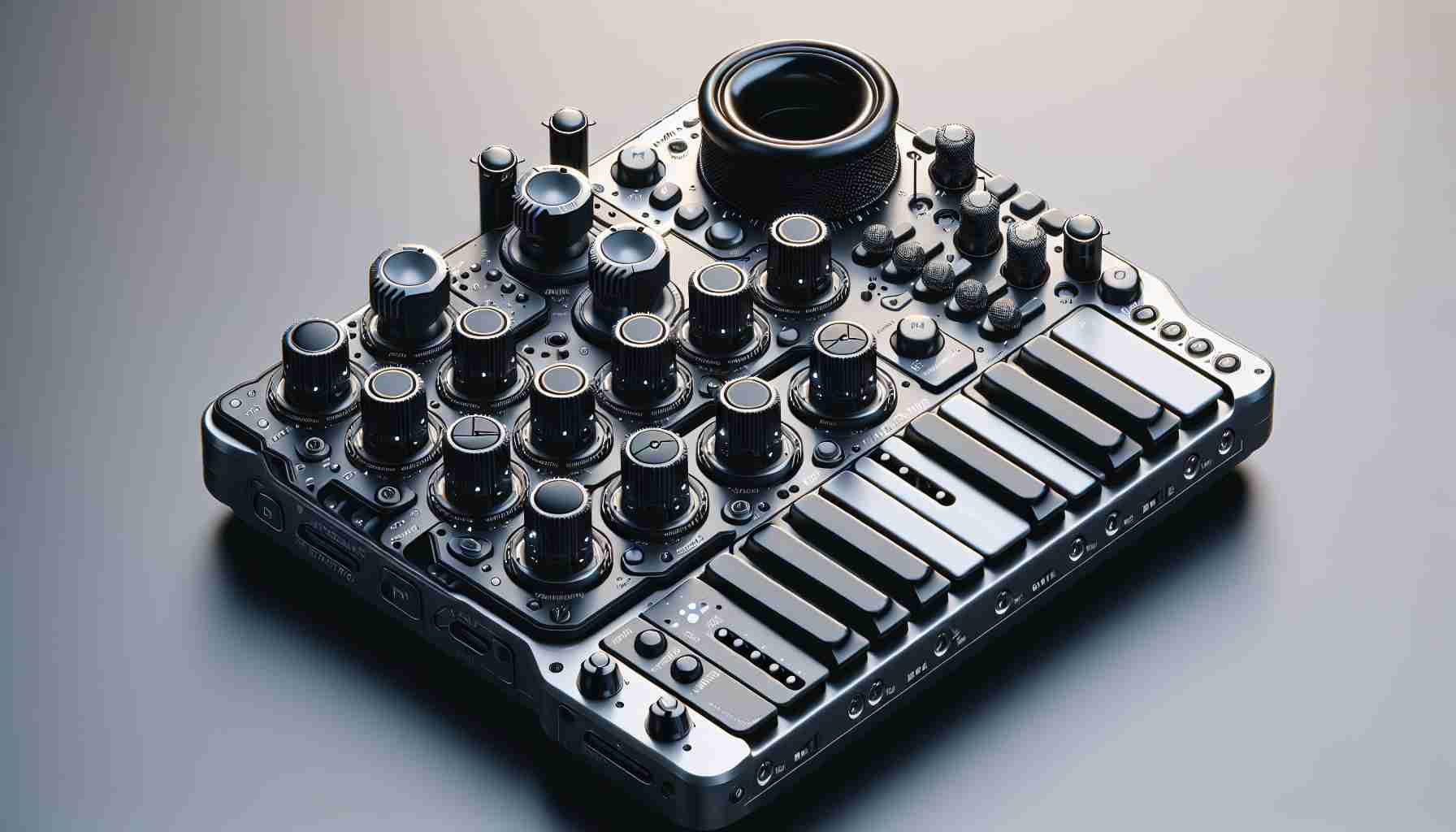The tech world is buzzing with excitement over a groundbreaking device called the Zefiro, created by the Italian startup Artinoise. This compact USB-C MIDI controller is ingeniously designed to be played like a wind instrument. Although it resembles a small flash drive or vape, this unique gadget allows users to produce music simply by blowing into it.
Through a Kickstarter campaign, Artinoise aims to raise funds for the production of the Zefiro, which they describe as a culmination of years spent developing musical instruments. Early supporters can secure a unit for €22 (approximately $24), while the anticipated retail price will be around €42 (about $45). A Pro model, featuring an accelerometer for enhanced performance, is also available.
The included Zefiro mobile app offers a customizable experience, with touch-sensitive buttons that enable users to access a variety of musical sounds. Unlike its predecessor, the Re.corder, the Zefiro is sleek and portable enough to fit on a keychain, yet it incorporates essential sensors for performance.
Moreover, this device acts as a standard MIDI wind controller compatible with various music software on computers. It provides a cost-effective alternative compared to high-priced solutions like the Hornberg MIDI Breath Station. The Zefiro even has a convenient optional headset holder, allowing musicians to play accompanying instruments hands-free. This innovative controller is set to revolutionize mobile music-making for enthusiasts and professionals alike.
Innovative MIDI Wind Controller: The Zefiro
As technology continues to reshape the music industry, the Zefiro by Italian startup Artinoise stands out as an innovative MIDI wind controller that offers new sonic possibilities. Beyond its enticing design and accessibility through crowdfunding, several additional aspects and considerations need to be explored.
Key Features and Technical Innovations
The Zefiro is not just a simple MIDI controller; it integrates advanced technology that sets it apart. The integrated IMU (Inertial Measurement Unit) allows for sophisticated gesture detection, enabling performers to manipulate sounds with movements. This feature is particularly appealing for live performances, where expressiveness and dynamic control can significantly enhance the musical experience.
Furthermore, the Zefiro includes an adaptive machine learning element that customizes sound responses based on user behavior. This personalization helps to create a uniquely immersive experience, making it easier for both beginners and seasoned musicians to produce music that reflects their style.
Important Questions and Answers
– What platforms does the Zefiro support?
The Zefiro is designed for compatibility with a wide range of digital audio workstations (DAWs) such as Ableton Live, GarageBand, and FL Studio, making it versatile for various music creation environments.
– How does the Zefiro compare to traditional wind instruments?
While traditional wind instruments require extensive training and breath control, the Zefiro simplifies the process, making it more accessible to non-musicians. However, traditional players might find the nuances of their techniques challenging to replicate with Zefiro.
Key Challenges and Controversies
Despite its promising capabilities, the Zefiro faces some challenges and potential controversies. There are questions regarding the durability and reliability of such a compact device, especially for professional musicians who need reliable equipment for live performances. Additionally, there may be skepticism in the traditional music community about whether a digital controller can truly replace the emotional depth of acoustic instruments.
Moreover, the effort to crowdsource funds on platforms like Kickstarter can raise concerns about product delivery timelines and potential changes in design based on backer feedback, potentially leading to frustration among early supporters.
Advantages and Disadvantages
Advantages:
1. Portability: The compact design makes it easy to carry, appealing to musicians on the go.
2. Affordability: Compared to traditional wind controllers, the Zefiro provides a budget-friendly option without compromising performance features.
3. User-Friendly: Ideal for novices, with easy setup and operation, as well as an intuitive app for customization.
Disadvantages:
1. Limited Authenticity: Some musicians may find digital manipulation lacks the authenticity of traditional wind instruments.
2. Durability Concerns: Like any portable device, there might be worries about its long-term durability under regular use.
3. Learning Curve: Although it’s user-friendly, mastering the device’s unique features may require practice, especially for those accustomed to traditional instruments.
In conclusion, the Zefiro represents a significant leap forward in MIDI wind controllers, blending advanced technology with user-friendly design. While it faces challenges and skepticism, its potential to innovate the way musicians create and perform is undeniable.
For more information, visit Artinoise.
The source of the article is from the blog mgz.com.tw
